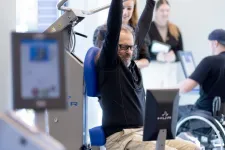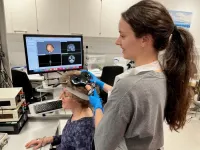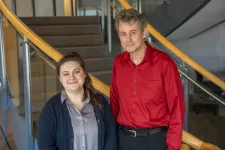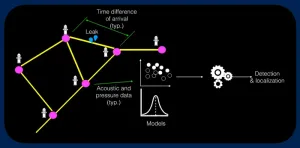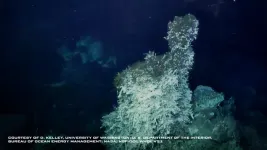(Press-News.org) When people leave their rural lives behind to seek their fortunes in the city or agriculture is no longer profitable, the lands they toiled on are often left unused. A new perspective piece in Science shows that these abandoned lands could be both an opportunity and a threat for biodiversity, and highlights why abandoned lands are critical in the assessment of global restoration and conservation targets.
The past 50 years have seen an increased exodus of populations from rural to urban areas. Today, 55% of the world’s population lives in or around cities and this proportion is expected to expand to up to 68% by 2050. There are of course a multitude of reasons for people to leave their rural lives behind and move to urban areas, including socioeconomic and political change, declining subsistence farming, and environmental factors. One effect of this continuous decrease in rural populations is that the land they leave behind leads to a rise in the number of abandoned fields and pastures, forestry areas, mines, factories, and even entire human settlements.
IIASA researcher Gergana Daskalova and Johannes Kamp, a researcher at the University of Göttingen in Germany, took a closer look at abandoned land – in other words land on which human activities have ceased – to explore how biodiversity is influenced, and what this means for ecology and conservation.
“The factors that drive depopulation and consequently also land abandonment are intensifying due to issues like climate change and the rapidly changing geopolitical landscape. The Russian invasion of Ukraine, for example, has already created new abandonment hotspots. Abandonment is a globally important process. The scale at which this is happening around the world urged us to put the spotlight on the places people have left behind as a potential source of future solutions for conservation, while also protecting human livelihoods,” Daskalova explains.
According to the authors, the exact amount of abandoned land around the world is unknown, but it is estimated that it could comprise up to 400 million ha globally, which is an area roughly half the size of Australia. Most of this abandoned land is in the Northern Hemisphere, of which around 117 million ha falls within the former Soviet Union.
The effect that abandoned areas have on biodiversity can be both positive and negative. The biggest wins are likely to be achieved where areas that were previously intensively farmed and where biodiversity was low, are abandoned. The first changes that will probably be observed in these areas would be the return of plant life, birds, and invertebrates that can survive in recently disturbed ecosystems. If the abandonment of these crop fields is coupled with people leaving the area or with wildlife reintroductions, this can lead to rewilding with the possible return of large herbivores and even carnivores. The authors however point out that not all abandoned land will recover without help, and that some of the land that was previously intensively farmed will never return to what it once was.
Land abandonment can also have negative impacts in terms of biodiversity, as well as for human culture and tradition. In areas that have traditionally been used for low-intensity, or subsistence farming over a long period of time, for instance, the close ties between the people and the land have created interdependent ecosystems that break down after people move away, thus leading to the loss of locally rare species or the proliferation of only one or two dominant species at the expense of others.
“Because abandonment usually happens out of sight, there is still so much we do not know about its imprint on the planet. We are currently working in Bulgaria, the quickest depopulating country in the world, to determine what types of plants, birds, and other biodiversity return to villages long after the last house lights have been turned off,” Daskalova notes.
Any gains in biodiversity on abandoned land can unfortunately be very quickly undone when land is recultivated or repurposed and, according to the authors, there is growing pressure to find new industrial uses for abandoned land, such as large-scale bioenergy, wind-, and solar energy production, often in just over a decade after abandonment.
The authors further highlight that finding the best use for abandoned land will involve balancing benefits for conservation, human livelihoods, and sustainability. It is therefore crucial that biodiversity change on abandoned land be included in regional and global assessments, policies, and scenarios and where abandoned land is reused, care should be taken to ensure that economic needs are balanced with restoration and conservation goals.
“It is important for future models and scenarios aimed at predicting the positive versus negative effects of abandonment on biodiversity to take into account whether the land is likely to remain abandoned and what the feedbacks between abandonment, biodiversity, human values, and livelihoods entail. As global conversations around this topic continue, we can look to abandoned lands as the product of centuries of interactions between people and nature, and create incentives not just for conservation, but also for land stewardship and the preservation of both social and ecological values,” Daskalova concludes.
Reference:
Daskalova, G.N., & Kamp, J. (2023). Abandoning land transforms biodiversity. Science DOI: 10.1126/science.adf1099
About IIASA:
The International Institute for Applied Systems Analysis (IIASA) is an international scientific institute that conducts research into the critical issues of global environmental, economic, technological, and social change that we face in the twenty-first century. Our findings provide valuable options to policymakers to shape the future of our changing world. IIASA is independent and funded by prestigious research funding agencies in Africa, the Americas, Asia, and Europe. www.iiasa.ac.at
END
Nature is changing as land abandonment increases
2023-05-11
ELSE PRESS RELEASES FROM THIS DATE:
First-of-its-kind measurement of the Universe’s expansion rate weighs in on a longstanding debate in physics and astronomy
2023-05-11
Thanks to data from a magnified, multiply imaged supernova, a team led by University of Minnesota Twin Cities researchers has successfully used a first-of-its-kind technique to measure the expansion rate of the Universe. Their data provide insight into a longstanding debate in the field and could help scientists more accurately determine the Universe’s age and better understand the cosmos.
The work is divided into two papers, respectively published in Science, one of the world’s top peer-reviewed academic journals, and The Astrophysical Journal, a peer-reviewed scientific journal of astrophysics and astronomy.
In astronomy, there are two precise ...
Historic achievement for international penile cancer trial--100 patients enrolled thus far, the most ever to a prospective study for treatment of an extremely rare disease
2023-05-11
Cancer of the penis is not a subject that comes up in conversation. When it does, one common response is, “I didn’t know you could get cancer there.” Not only is it not spoken about, but it is also rare, with fewer than one case per 100,000 men diagnosed in developed countries like the United States and the United Kingdom per year. That rarity has meant far fewer clinical trials have been developed and conducted to guide its treatment, and in most cases, only small numbers of patients have been included. Fortunately, researchers from both sides ...
Getting active, while living with a partial spinal cord injury
2023-05-11
A UBC Okanagan researcher has been testing the effectiveness of a mobile app that encourages people living with a spinal cord injury—but can walk—to get active.
Dr. Sarah Lawrason, a researcher in the School of Health and Exercise Sciences, has focused her career on working with people who live with a spinal cord injury (SCI) but are ambulatory. She describes this population as an isolated, often misunderstood group of people because while they live with an SCI, they may not rely on a wheelchair all of the time for mobility.
“When people think of someone with an SCI, they picture a ...
New, free online language course helps you learn Ojibwe
2023-05-11
TORONTO – May 11, 2023 – With funding from Canada’s Social Sciences and Humanities Research Council (SSHRC), Baycrest, the Kingston Indigenous Language Nest (KILN) and the University of Toronto have released a free online language course to learn the Indigenous language Ojibwe, also known as Anishinaabemowin.
The Ojibwe language is spoken in Indigenous communities around the Great Lakes in Canada and the US, but serious efforts are needed to ensure the long-term survival of the language.
“Due to the aging of people who ...
New research sheds light on the causes of fatigue after COVID 19
2023-05-11
Experts from Newcastle University found the nervous system of people with post-Covid fatigue was underactive in three key areas. Fatigue is one of the most common symptoms of long Covid.
The breakthrough could lead to better treatment and tests to identify the condition and the team are already progressing the work having just started a trial. They have begun recruiting patients to test the effectiveness of a TENS machine – commonly used for pain relief in childbirth – to alleviate the fatigue in patients with long Covid.
Newcastle University ...
Into the Blue: Securing a sustainable future for kelp forests
2023-05-11
Into the Blue: Securing a Sustainable Future for Kelp Forests global synthesis report is the most comprehensive knowledge review on kelp to date, revealing the state of science on the world’s kelp forests and providing recommended actions to build the recovery of the world’s kelp forests.
Aiming to improve our understanding of the value of kelp forests and provide recommendations to protect and sustainably manage them, the report also provides a range of policy and management interventions and options that can be used to maintain these remarkable ecosystems into the future and to support the people and economies that have depended on them for generations.
Despite ...
Heavy drinking poses even greater risk for one in three Americans
2023-05-11
LOS ANGELES — Two people regularly have a few alcoholic drinks daily. One develops liver disease. The other doesn’t.
What explains the different outcomes?
The answer may lie in a condition known as metabolic syndrome, a cluster of conditions that together raise the risk of coronary heart disease, diabetes, stroke and other serious health problems. This syndrome, characterized by symptoms such as abdominal fat, high blood pressure, high cholesterol and high blood sugar, affects more than one in three Americans.
A new ...
Gene linking circadian and circatidal rhythms is discovered in tiny crustacean
2023-05-11
Scientists at UMass Chan Medical School and the Marine Biological Laboratory at Woods Hole have identified the first gene—Bmal1—to play a crucial role in regulating circatidal behavior in the crustacean Parhyale hawaiensis. Circatidal rhythms help animals cope with the rise and fall of the tides in coastal areas.
Published in Current Biology, the study by neurobiologists Patrick Emery, PhD, Joshua Rosenthal, PhD, and colleagues demonstrates the first molecular link between circatidal and circadian ...
Fire hydrant hydrophones find water leaks #ASA184
2023-05-11
CHICAGO, May 11, 2023 – Access to clean drinking water is essential for healthy communities, but delivering that water is growing increasingly difficult for many utilities. Corroding pipes and land shifts in aging water distribution networks can create frequent leaks, wasting water before it ever gets to the tap. Utilities in the U.S. lose about 6 billion gallons of water a day — enough to fill 9,000 swimming pools — due to leaks, in addition to wasted energy and resources spent in collecting and treating that water.
Pranav Agrawal and Sriram Narasimhan from the University ...
InVADER mission to test its robotic laser divebot on a deep-sea expedition
2023-05-11
InVADER Mission to Test its Robotic Laser Divebot on a Deep-Sea Expedition
Team to test technologies for use in future planetary exploration while providing data to survey deep-sea ecosystems and minerals on Earth
May 11, 2023, Mountain View, CA – A team of scientists and engineers from the SETI Institute, Impossible Sensing, NASA JPL, and other institutions will test their innovative robotic laser system on a deep-sea expedition aboard the E/V Nautilus. The mission, called InVADER (In-situ Vent Analysis Divebot for Exobiology Research), aims to advance technologies to explore, ...




